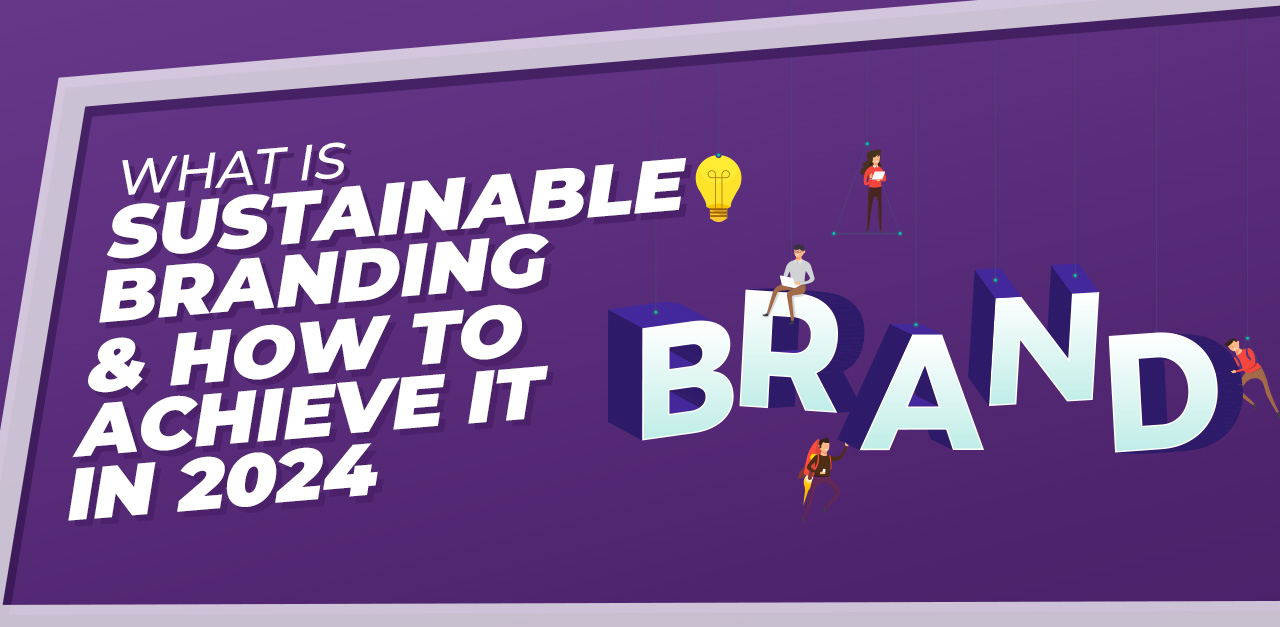Sustainable branding is now an important idea for companies attempting to synchronize their activity with social and environmental responsibility. What is sustainable branding and how to accomplish it in 2025 is a question that many brands are currently asking since consumers require more environmentally friendly and ethical options.
Sustainable branding goes beyond just promoting green practices; it integrates sustainability into every aspect of a brand’s identity, from product development to marketing and customer engagement.
In this blog, we’ll explore the concept of sustainable branding, its growing importance, and actionable steps for achieving it in 2025. It’s more than a trend; it’s a commitment to social responsibility, environmental responsibility, and ethical practices.
In 2025, sustainable branding means aligning your business values with global consciousness towards a healthier planet. Consumers are becoming increasingly aware of the impact they have on the world, and their actions speak louder than words.
As part of this progressive approach, innovative strategies combine profits with purpose, ensuring your business grows while contributing positively to our planet’s future. Are you ready to lead your brand into the future of sustainability? Lets dive in
What is Sustainable Branding?
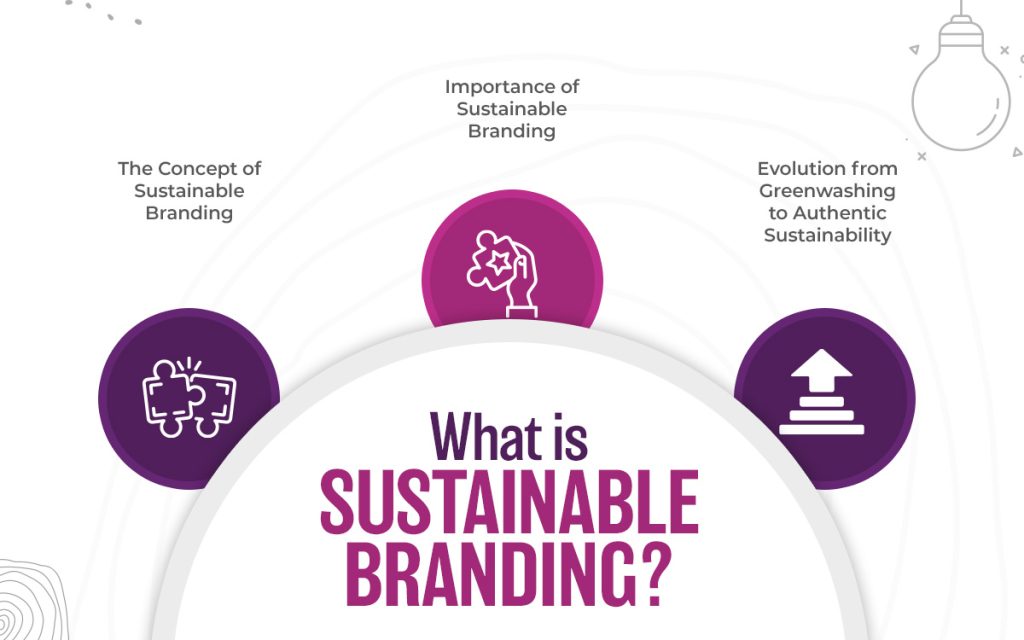
Sustainable branding is about creating a brand identity that is not only profitable, but also ethical, environmental, and socially responsible.
Consumers today are more aware of values than just financial performance.
The Concept of Sustainable Branding
The foundation of sustainable branding lies in infusing sustainability into every aspect of a brand’s identity and operations.
It’s not just about offering eco-friendly products or services; it’s about ensuring that every business decision, from supply chain management to marketing strategies, aligns with sustainability principles.
This means reducing environmental footprints, engaging in fair labor practices, and actively contributing to the welfare of communities and ecosystems.
Importance of Sustainable Branding
Consumers are more informed and environmentally conscious than ever before. They’re not just looking for quality products; they’re seeking brands that reflect their values and concerns about the planet.
Sustainable branding helps build trust and loyalty among these consumers, giving brands a competitive edge. Additionally, it mitigates risks associated with environmental regulations and the growing demand for corporate transparency and accountability.
Moreover, sustainable branding is crucial for attracting top talent.
Employees, especially millennials and Gen Z, increasingly prefer to work for companies that are committed to positive social and environmental impact. This approach to branding can also drive innovation, as it encourages companies to find new, more sustainable ways of doing business.
Evolution from Greenwashing to Authentic Sustainable Branding
It has not been an easy road to sustainable branding. Initially, some companies engaged in “greenwashing” – making exaggerated or false claims about their environmental practices just to appear eco-friendly.
This superficial approach often backfired, as savvy consumers and activists could see through the mask.
However, we’ve witnessed a significant evolution from this superficial greenwashing to authentic sustainability. Brands are now being held accountable by more stringent regulations, non-governmental organizations, and a vigilant public.
There’s a growing realization that sustainability needs to be deeply ingrained in a brand’s DNA, not just superficially plastered over its image.
In today’s world, sustainability means reporting your impact on the environment, reducing your carbon footprint, and engaging your community. In a circular economy, waste is minimized and resources are reused, and brands invest in sustainable technologies and materials, make sure fair labor practices apply, and actively protect the environment.
Why Does Sustainable Branding Matter?
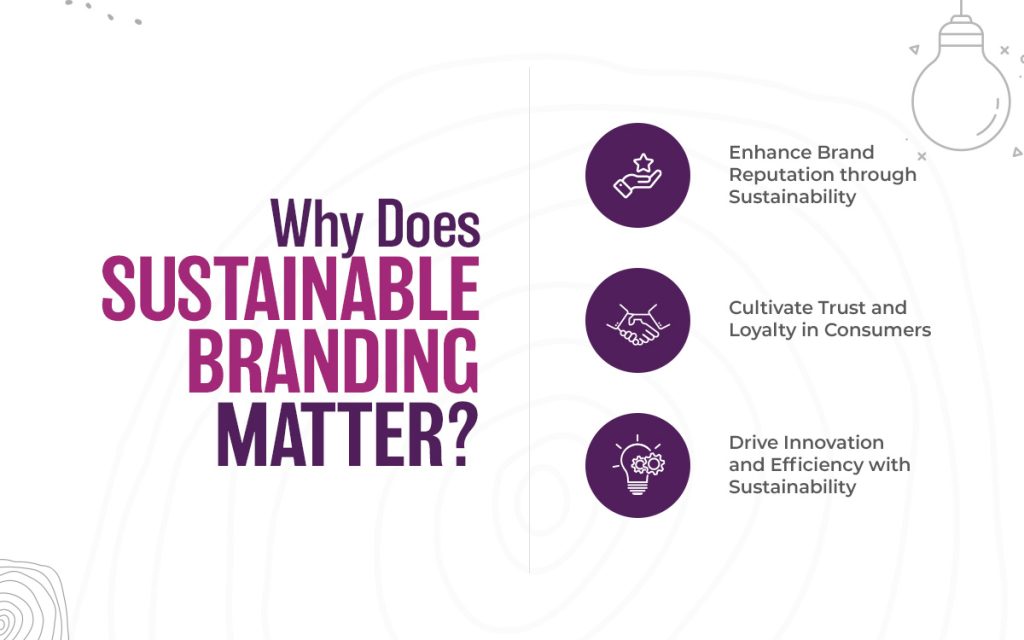
In a world increasingly aware of environmental and social issues, sustainable branding has become crucial.
It’s more than just a marketing strategy; it’s a commitment to ethical practices and environmental stewardship that resonates deeply with today’s consumers.
Sustainable branding builds trust, enhances reputation, and aligns a company’s values with those of its customers.
Let’s discuss these factors below:
Enhance Brand Reputation through Sustainability
Firstly, sustainable branding can significantly enhance a brand’s reputation. In a world where news spreads fast, and consumers are more informed than ever, how a company approaches sustainability can make or break its public image.
A brand that is genuinely committed to sustainable practices is often viewed as a leader and an innovator. This positive perception is crucial, not just for attracting customers but also for maintaining a strong position in the market.
When consumers see a brand taking real steps towards reducing its environmental impact or ensuring ethical labor practices, they’re more likely to view that brand as responsible and trustworthy.
Cultivate Trust and Loyalty in Consumers
Speaking of trust, sustainable branding plays a pivotal role in cultivating consumer trust and loyalty. Today’s consumers are looking for more than just products or services; they seek a connection with brands whose values align with theirs.
When a brand demonstrates a genuine commitment to sustainability, it resonates with these values. This connection goes a long way in building long-term customer relationships. Consumers are more likely to remain loyal to a brand that they believe is making a positive impact on the world.
Moreover, in the age of social media, these loyal customers often become advocates for the brand, sharing their positive experiences and beliefs with others.
Drive Innovation and Efficiency with Sustainability
Lastly, sustainability is a powerful driver of innovation and efficiency. When brands commit to sustainable practices, they’re often pushed to rethink the way they operate.
This can lead to innovative solutions that not only reduce environmental impact but also improve efficiency and reduce costs.
For instance, by adopting more sustainable manufacturing processes or materials, a brand might discover more efficient ways of producing their products or even entirely new product lines. This innovation can give brands a significant edge in an increasingly competitive market.
Sustainable Branding Principles & Process – 6 Brand Strategy Examples
Sustainable branding refers to the process of incorporating principles of sustainability into a brand’s identity, operations, and communication strategies.
This approach is rooted in the understanding that brands have a significant influence on consumer behavior and societal norms, and therefore carry a responsibility to promote environmental, social, and economic sustainability.
1. Transparency and Authenticity: When it comes to sustainable branding, honesty is crucial. Brands need to be transparent about their sustainability efforts and avoid exaggerating their eco-credentials.
Example: Consider a fashion retailer that provides a complete, accessible breakdown of its supply chain on its website, detailing everything from the sourcing of materials to the labor conditions in factories. This level of transparency not only builds trust but also sets a standard for industry peers.
2. Eco-friendly Operations and Products: Adopting sustainable practices in operations and product development is crucial. This involves using eco-friendly materials, reducing emissions, and conserving resources.
Example: A coffee chain could innovate by introducing fully compostable coffee cups and sourcing beans from farms practicing sustainable agriculture. This not only reduces environmental impact but also appeals to environmentally conscious consumers.
3. Ethical Labor Practices: Sustainable branding also involves fair and ethical treatment of employees and workers throughout the supply chain.
Example: A technology firm might enforce a strict policy ensuring that all components are sourced from suppliers who provide fair wages, adequate working conditions, and respect workers’ rights, setting a strong ethical standard in the industry.
4. Community Engagement: Building a sustainable brand often involves actively contributing to social and environmental causes.
Example: A beauty brand could engage in community projects, like supporting local biodiversity projects or funding educational programs in underprivileged areas. Such initiatives demonstrate a commitment to social responsibility that goes beyond the company’s immediate business interests.
5. Circular Economy: Designing out waste is the goal of the circular economy.
Example: A furniture brand could design products that are easy to disassemble, repair, or recycle, effectively reducing waste. By doing so, the brand not only minimizes its environmental footprint but also educates consumers about sustainable consumption.
Innovative Solutions for Sustainability: Sustainable branding is often driven by innovation in reducing environmental impacts.
Example: An automobile manufacturer investing in the development of electric vehicles and incorporating renewable energy sources in its manufacturing processes is a prime example. This approach not only reduces the carbon footprint but also positions the brand as a leader in sustainable innovation.
6. Consistent Sustainable Messaging: All messages should align with sustainability values.
Example: A grocery store chain could launch a marketing campaign highlighting its commitment to selling local, organic produce and reducing plastic packaging. This consistent messaging reinforces the brand’s commitment to sustainability and helps build a loyal customer base that shares these values.
How to Build Sustainable Brand Identity
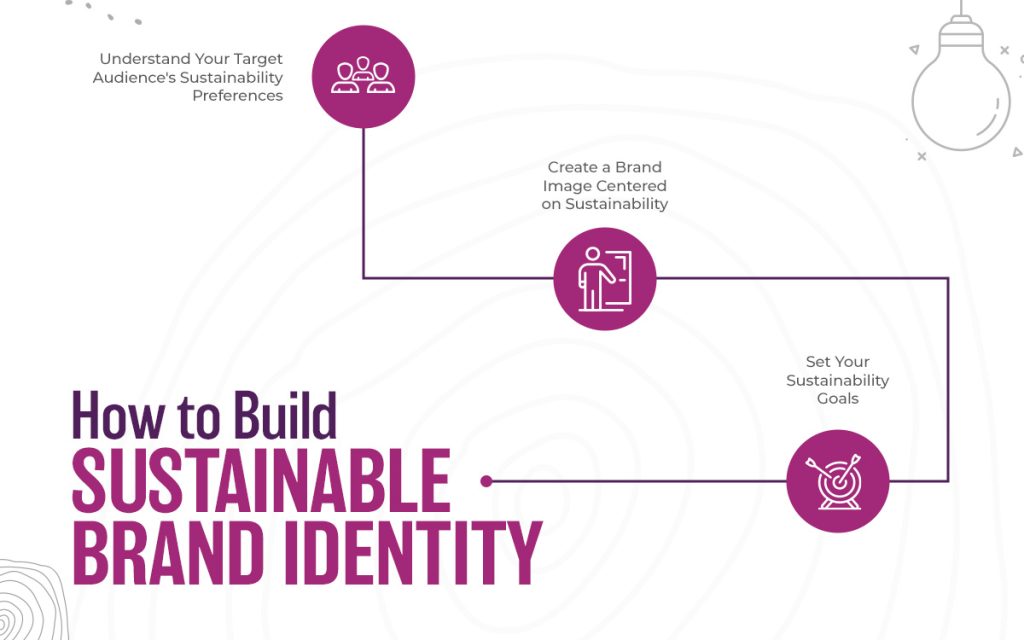
Building a sustainable brand identity goes beyond marketing.
It’s about integrating sustainability into the very core of your brand, from the core values to the day-to-day operations. This process starts with setting clear, attainable sustainability goals and extends to developing a brand image that authentically reflects these commitments.
Understanding and aligning with your target audience’s sustainability preferences is key.
It strengthens a brand’s position in the marketplace as well as fosters a loyal community around shared values that reinforce its market position.
Set Your Sustainability Goals
The journey towards building a sustainable brand identity starts with setting clear, concrete sustainability goals. This is a critical step because it lays down the foundation upon which your entire sustainability strategy will be built. These goals need to be specific, measurable, achievable, relevant, and time-bound (SMART).
For instance, if you’re in the food industry, your goals might include reducing food waste in your supply chain by 50% in the next five years, sourcing 100% of your ingredients from sustainable farms by 2030, or ensuring all packaging is either recyclable or compostable within three years. These goals must be aligned with your brand’s overall mission and values, ensuring they are not just add-ons but integral to your brand’s identity.
Create a Brand Image Centered on Sustainability
Once your goals are set, the next step is to create a brand image that reflects your commitment to sustainability. This goes beyond just the visual elements like logos or color schemes; it encompasses every aspect of how your brand presents itself to the world.
You should communicate your sustainability ethos in a way that’s easily understood and appreciated by your audience. This could involve redesigning your product packaging to be more eco-friendly, ensuring your marketing materials use sustainable or recycled materials, or even reimagining your brand’s visual identity to reflect nature-inspired themes and motifs.
Thinking of revamping your brand with a sustainable edge?
Design Shifu is your go-to solution. Our expertise lies in crafting brand images that echo your commitment to sustainability.
From creating nature-inspired logos to redesigning product packaging with eco-friendly materials, we cover it all. With Design Shifu, you get the benefit of unlimited revisions, fast turnaround times, and full design ownership at a transparent flat rate.
Boost your brand’s eco-conscious image with our professional, custom designs. Subscribe to Design Shifu now for a brand makeover that’s as green as it is creative!
Understand Your Target Audience’s Sustainability Preferences
The knowledge of your target audience’s sustainability preferences is crucial in shaping your brand to meet their expectations and align with their values. Different audiences might prioritize different aspects of sustainability. While some may be more concerned about climate change and carbon footprints, others might focus on ethical labor practices or reducing plastic waste.
Conduct thorough market research to understand these preferences. This could involve surveys, social media listening, or focus group discussions. The goal is to gain insights into what aspects of sustainability are most important to your customers and how they perceive various sustainability initiatives.
For example, if you discover that your target audience is particularly passionate about reducing plastic waste, you might focus your efforts on developing plastic-free packaging solutions. If they’re more concerned about ethical labor practices, you could highlight your brand’s fair trade certifications or initiatives to improve working conditions in your supply chain.
How to Market Your Sustainable Brand
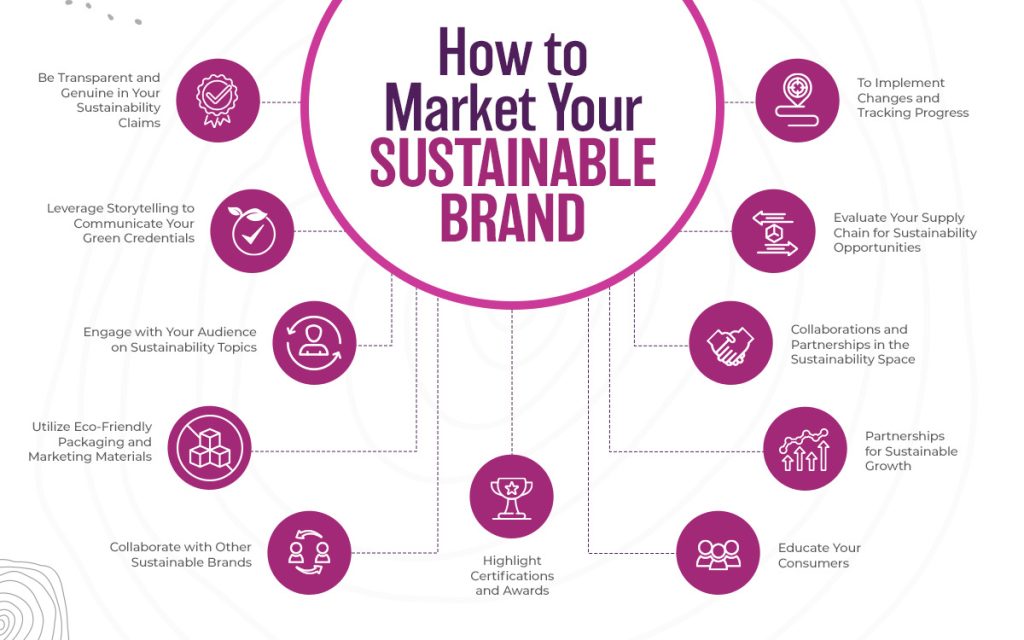
Marketing a sustainable brand requires a strategic approach that’s significantly different from traditional marketing.
It’s not just about selling a product or a service; it’s about communicating your commitment to sustainability and connecting with your audience on a meaningful level. Let’s discuss how you can effectively market your sustainable brand, including the points you’ve mentioned and adding a few more to round out the strategy.
Be Transparent and Genuine in Your Sustainability Claims
Transparency is key in sustainable branding. Your audience is looking for genuine commitment, not greenwashing. This means being honest about both your successes and your areas for improvement.
For instance, if you’re a fashion brand, don’t just celebrate the use of organic materials; also be open about the challenges you face, such as reducing water usage or ensuring fair labor practices across your supply chain. This honesty not only builds trust but also establishes your brand as genuinely committed to sustainability.
Leverage Storytelling to Communicate Your Sustainable Branding Efforts
Storytelling is a powerful tool in sustainable marketing. People connect with stories much more deeply than with facts and figures. Share the journey of your products, from sustainable sourcing to ethical production practices.
For example, if you’re a coffee brand, tell the story of how you source beans from sustainable farms, the difference it makes to the communities and the environmental benefits. This helps consumers understand and appreciate the value of what they are buying.
Boost Consumer Trust through Sustainable Branding Practices
Engagement is crucial. Use your platforms to not only inform but also to engage in conversations about sustainability. This could be through social media, blogs, webinars, or community events. Invite feedback, answer questions, and be part of the broader conversation on environmental and social issues.
For instance, if you’re a skincare brand using sustainable ingredients, you might host a webinar on the importance of sustainable sourcing in the beauty industry.
Utilize Eco-Friendly Packaging and Marketing Materials
Your commitment to sustainability should be evident in all aspects of your brand, including packaging and marketing materials. Use recycled or biodegradable materials for packaging.
For marketing, opt for digital platforms over print to reduce paper usage, or if the print is necessary, use recycled paper and eco-friendly inks. This not only reduces your environmental impact but also reinforces your brand’s sustainability message.
Are you ready to align your brand’s packaging and marketing with your sustainability values? Design Shifu is here to guide your eco-friendly transformation. Our creative team excels in crafting impactful, digital-first designs that minimize environmental impact.
Choose Design Shifu for rapid turnaround, unlimited revisions, and full rights to your eco-conscious designs, all at a transparent flat rate. Subscribe now and let Design Shifu lead your brand towards a greener, more sustainable future with professional, earth-friendly design solutions!
Collaborate with Other Brands for Sustainable Branding Impact
Collaboration can amplify your sustainability efforts. Partner with other sustainable brands or organizations for joint marketing campaigns, events, or initiatives. This not only broadens your reach but also strengthens your credibility in the sustainability space.
For example, a sustainable clothing brand could collaborate with an eco-friendly detergent brand to promote a ‘green laundry’ campaign.
Highlight Certifications and Awards
If your brand has received any sustainability certifications or awards, highlight them in your marketing. These can be powerful endorsements of your commitment to sustainability. Include them on your product labels, website, and in your marketing communications.
For example, if your products are Fair Trade certified, make sure this is prominently displayed.
Educate Your Consumers
Lastly, use your platform to educate your consumers about sustainability. This doesn’t mean preaching to them; rather, it’s about providing useful information that helps them make more sustainable choices.
For instance, a food brand could share tips on reducing food waste or recipes that use eco-friendly ingredients.
Partnerships for Sustainable Growth
Partnerships and collaborations play a crucial role in driving sustainable growth.
Let’s break down why these alliances are vital and how you can evaluate and optimize your supply chain for sustainability.
Collaborations and Partnerships in the Sustainability Space
The first thing to consider is how collaborations can increase your sustainability efforts. When businesses with shared values and goals come together, they can create a bigger impact than they could alone. It’s like the old saying, “Two heads are better than one.” But in this case, it’s not just about ideas; it’s about resources, reach, and expertise.
Imagine a clothing brand partnering with a recycling company. Together, they could develop a program where customers return their old clothes for recycling, and in return, they get a discount on their next purchase. This not only helps reduce waste but also strengthens the brand’s commitment to sustainability, while the recycling company gains more material to work with. It’s a win-win.
Another example could be a food company partnering with local farmers to source ingredients. This kind of partnership ensures fresher ingredients for the company and supports local agriculture, reducing transportation emissions and helping local economies.
Evaluate Your Supply Chain for Sustainability Opportunities
The next step is looking at your supply chain. This is where a lot of sustainability opportunities are hiding in plain sight. Evaluating your supply chain for sustainability isn’t just about ticking a box; it’s about understanding the entire lifecycle of your products and identifying areas where you can make a real difference.
Start by mapping out your supply chain from end to end. Look at each step – from sourcing raw materials to manufacturing, from packaging to distribution – and ask yourself, “How can this be more sustainable?” Sometimes the answers are simple, like switching to a supplier who uses renewable energy. Other times, it might require more creativity, like rethinking your packaging to reduce waste.
For instance, if you’re in the electronics industry, you could look into sourcing materials from suppliers who practice responsible mining. Or if you’re a retailer, you could evaluate the environmental practices of the manufacturers you work with. It’s about digging deep and finding those opportunities to make a change.
To Implement Changes and Tracking Progress
Once you’ve identified these opportunities, the next step is to implement changes. This can be challenging, but the key is to start small and scale up. Begin with the most feasible changes and gradually work your way up to the more complex ones.
It’s also essential to track your progress. Set up a system to monitor the impact of the changes you’ve made. This could be anything from tracking the reduction in carbon emissions to monitoring the amount of waste reduced.
Track Your Sustainable Brand Performance
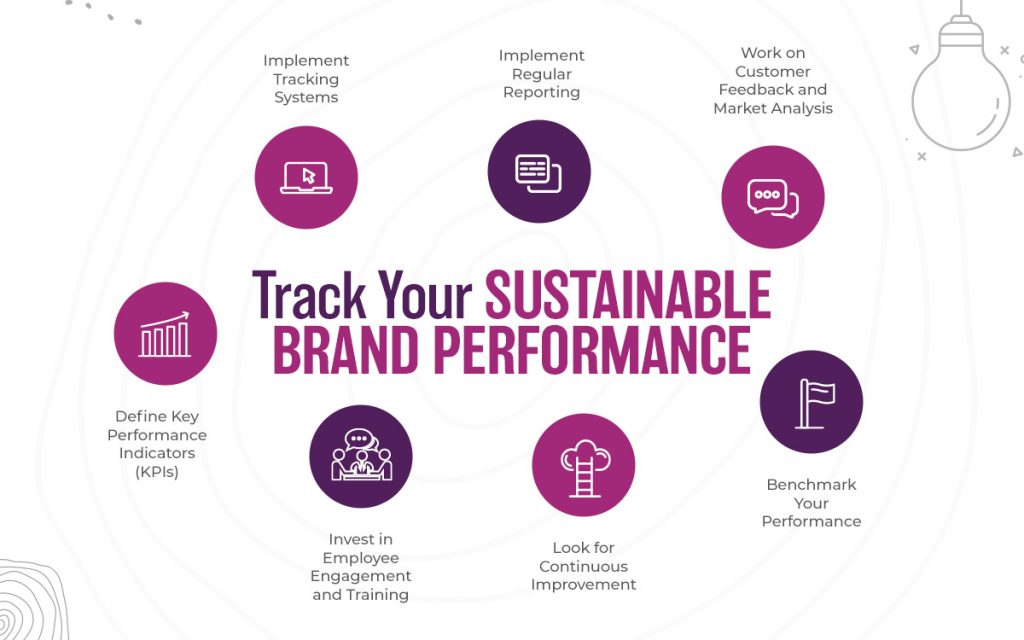
Tracking the performance of your sustainable brand is an essential aspect of maintaining and improving your sustainability efforts. It’s not just about measuring financial success, but also about assessing how well your brand is meeting its sustainability goals.
Define Key Performance Indicators (KPIs)
The first step is to define specific Key Performance Indicators (KPIs) that align with your sustainability goals. These KPIs will vary based on your industry and objectives but might include metrics like carbon footprint reduction, percentage of recycled materials used in products, energy efficiency levels, or volume of waste reduced.
For instance, if one of your goals is to reduce your carbon emissions, a relevant KPI could be the percentage reduction in CO2 emissions year over year.
Implement Tracking Systems
Once your KPIs are defined, you need systems in place to track these metrics. This might involve setting up new processes for data collection and analysis. For example, if you’re tracking waste reduction, you’ll need a system to measure and record waste levels regularly.
It could be as simple as recording the weight of waste generated each month or as sophisticated as using software to track and analyze waste management data.
Implement Regular Reporting
Regular reporting is crucial for keeping track of how well your brand is performing against its sustainability goals. These reports should be as transparent and detailed as possible.
They serve not only as an internal tool for assessing progress and areas for improvement but can also be shared with stakeholders, including customers, investors, and partners, to demonstrate your commitment to sustainability.
Work on Customer Feedback and Market Analysis
Listening to your customers and analyzing market trends can provide valuable insights into how your sustainable brand is perceived and where there’s room for improvement.
Conduct surveys, focus groups, or social media listening to gather feedback on your sustainability initiatives. Additionally, keeping an eye on market trends can help you understand how your efforts stack up against industry standards and competitors.
Benchmark Your Performance
Benchmarking involves comparing your sustainability performance against industry standards or competitors.
This helps to put your efforts into perspective and identify areas where you can improve or opportunities for innovation. For example, if you’re in the retail industry, you might compare your packaging sustainability practices with those of leading eco-friendly retail brands.
Look for Continuous Improvement
Sustainable branding is an ongoing process. The data you collect should be used to continuously refine and improve your sustainability strategies.
For example, if you find that your carbon footprint has not reduced as expected, it could be an opportunity to explore new, more effective carbon reduction strategies.
Invest in Employee Engagement and Training
Don’t forget the role your employees play in achieving your sustainability goals. Regular training and engagement initiatives can help ensure that your team understands and is committed to your sustainability objectives.
Employees should be encouraged to provide feedback and suggestions for how sustainability practices can be improved or implemented more effectively in their areas of work.
Frequently Asked Questions
Is Originality in Branding Dead?
Originality in branding isn’t extinct; it’s evolved into meaningful distinctiveness. True originality emerges by authentically connecting through unique narratives and core values. Brands thrive by understanding their audience and expressing themselves sincerely.
How Can Your Brand Do It in a Meaningful Way That Speaks to Your Customers?
Understand your customers’ values, needs, and aspirations. Actively engage, listen to feedback, and address issues they care about. Align your brand’s messaging and actions by demonstrating values through sustainable practices, community initiatives, and ethical operations.
How Can Brand Purpose Drive Business Growth?
A strong brand purpose drives business growth by fostering emotional connections with customers, boosting loyalty, and enabling premium pricing. It guides decisions, inspires employees, and opens doors to innovation and new markets. Businesses with clear purpose adapt better to market changes, grounded by their core values.
How Can Companies Ensure Their Branding Aligns with Sustainable Values?
To align branding with sustainable values, companies must embed genuine sustainability into operations like supply chains and employee practices. Marketing should transparently highlight these efforts, helping customers see their impact. Consistency is key- every aspect, from product design to customer service, must reflect a true commitment to sustainability.
What Role Does Storytelling Play in Sustainable Branding?
Storytelling is key to sustainable branding, turning values into emotional narratives that connect with audiences. It highlights a brand’s sustainability journey, showcasing challenges, impacts, and innovations. This approach educates, inspires, and motivates customers to join the mission.

